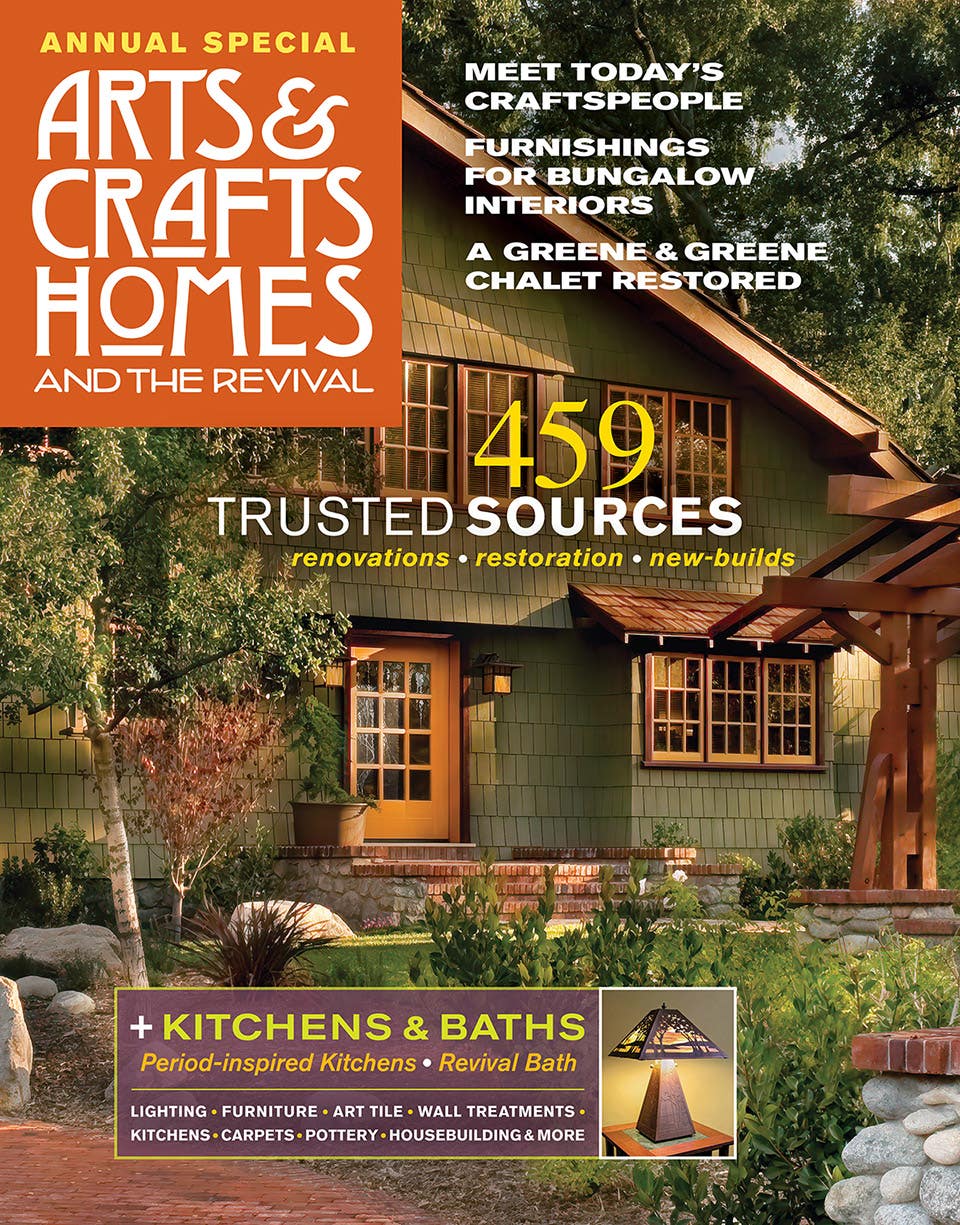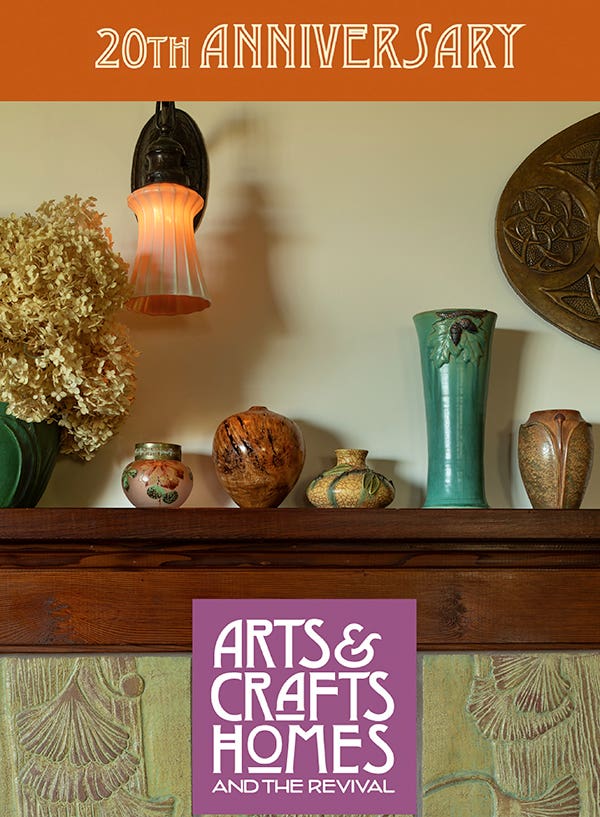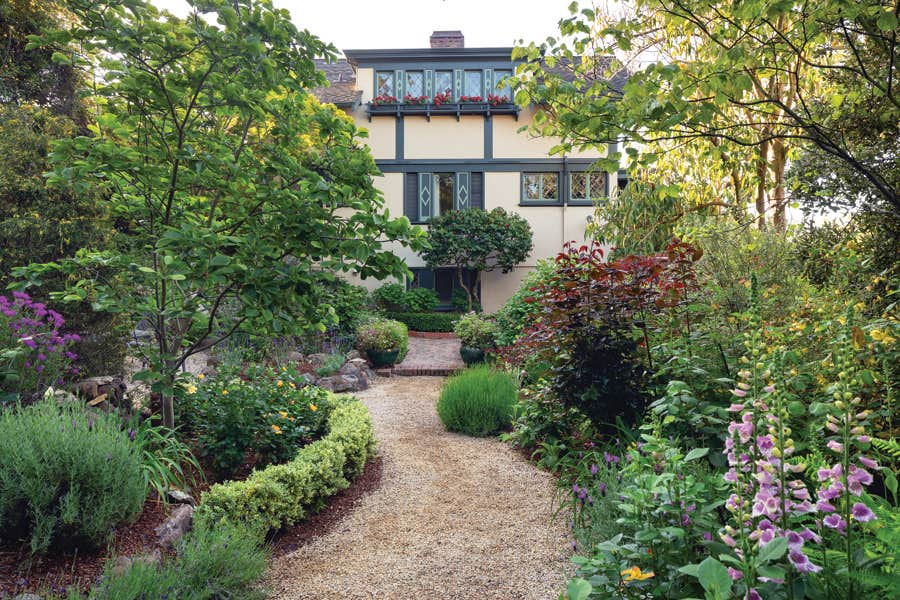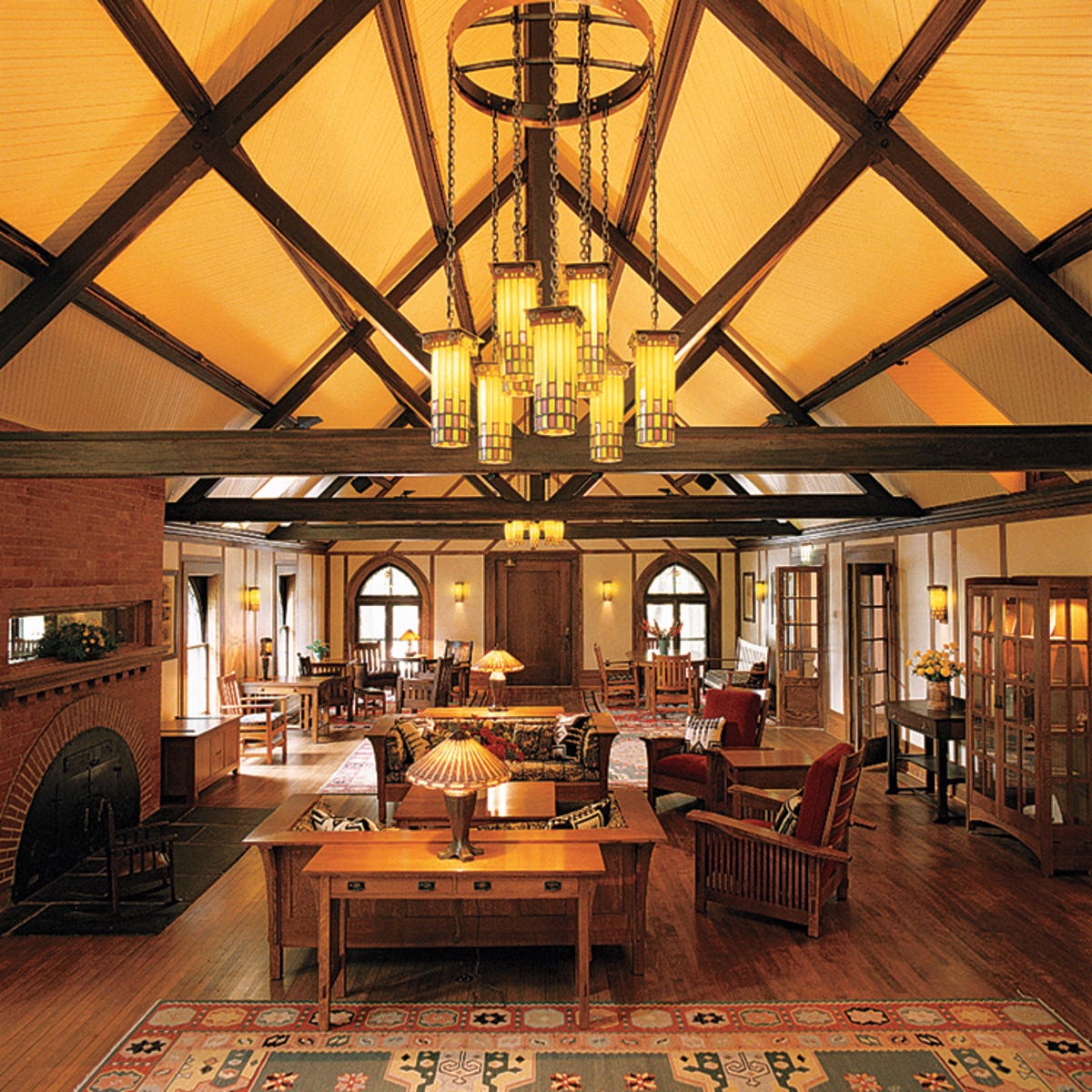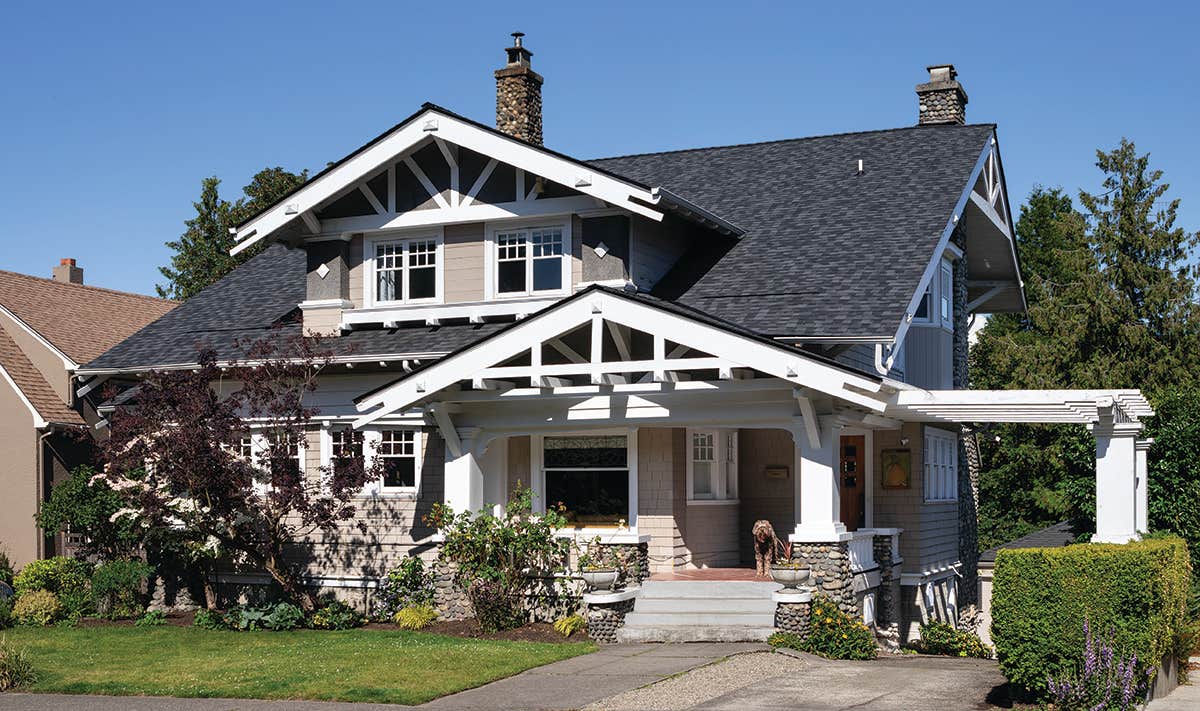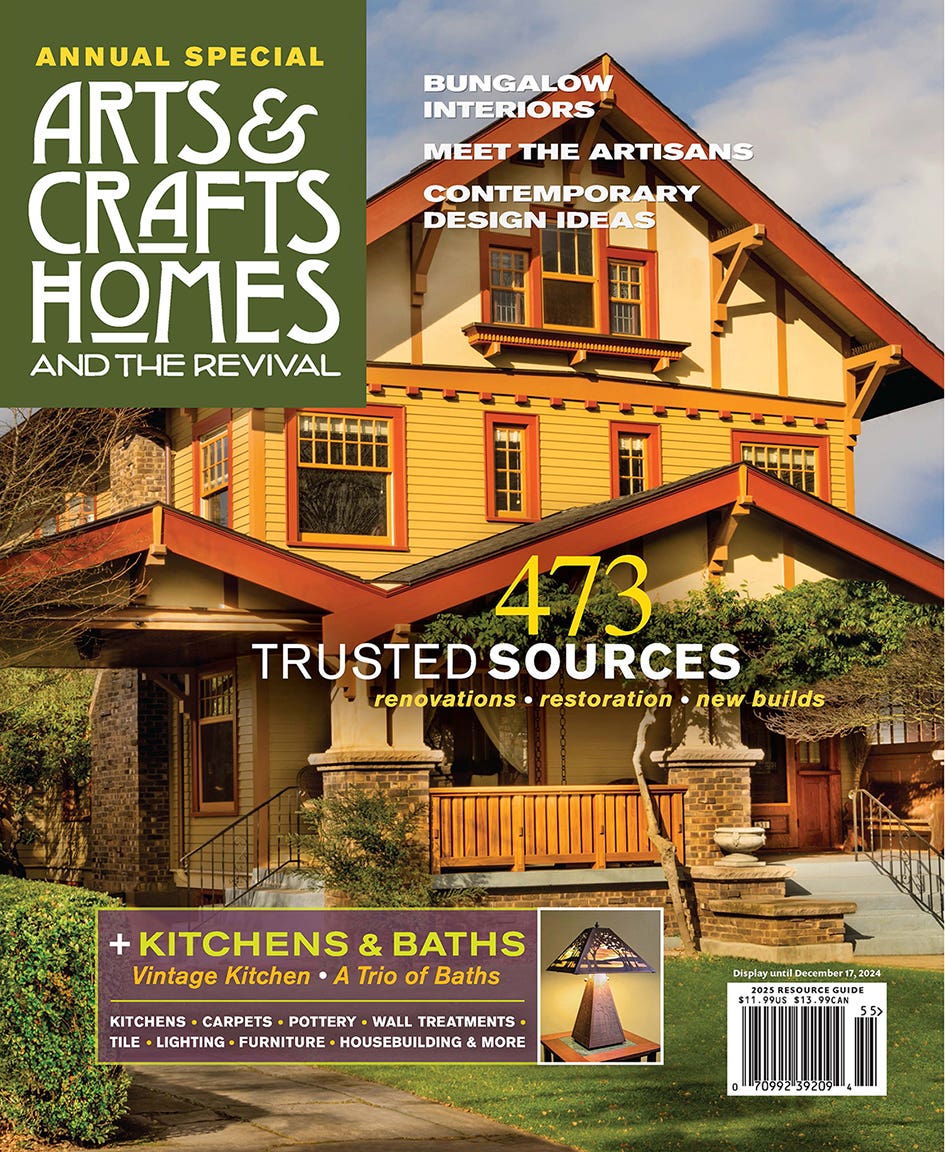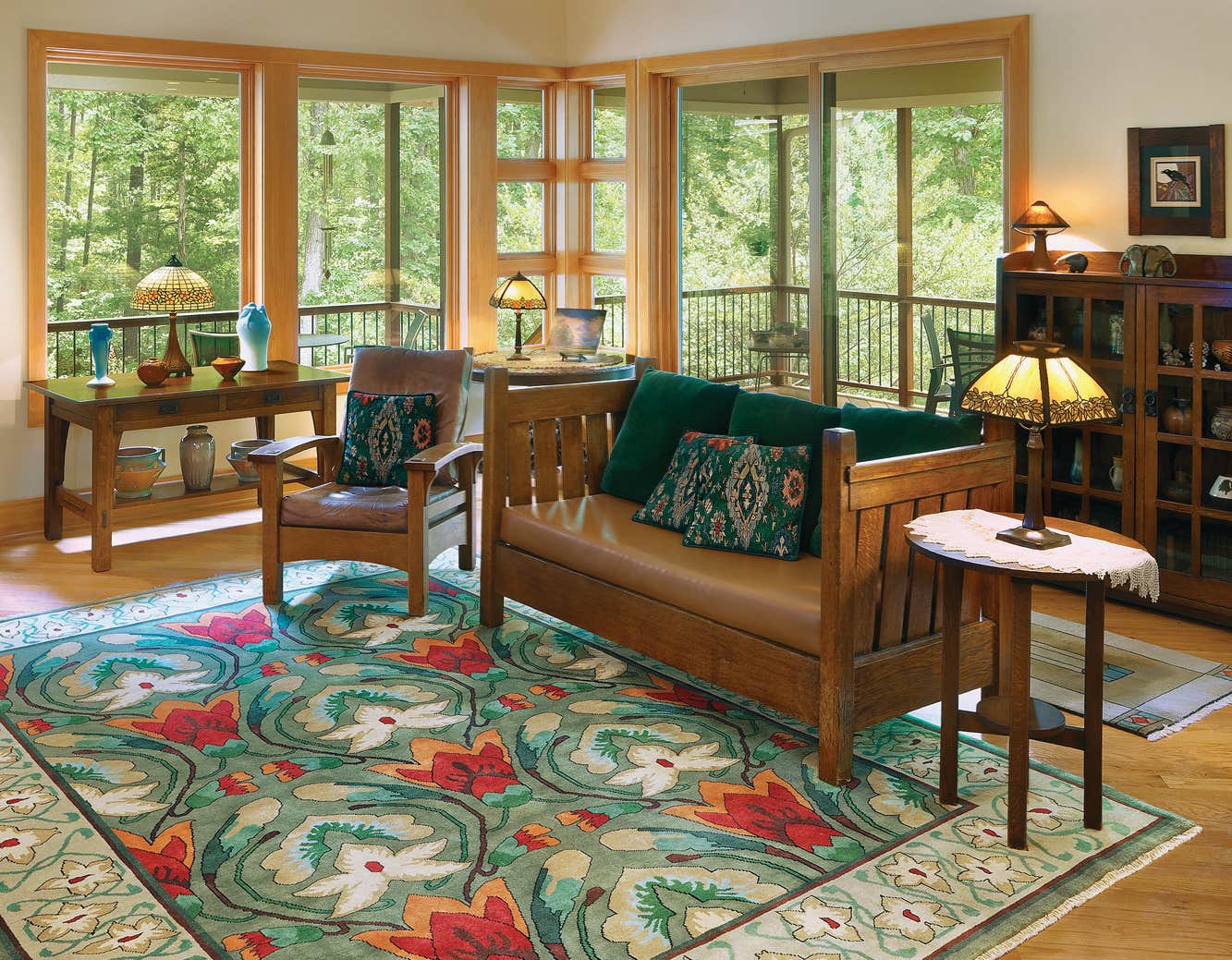Defining the Arts & Crafts Movement
The American version of Arts & Crafts was simpler than the European movements, emphasizing wood tones and earthy materials and colors.
The American Arts and Crafts Movement came just after the Victorian period and encompassed Stickley's fumed-oak Mission furniture and his artistic Craftsman homes, the bungalow phenomenon, regional building materials, and proto-Modern architecture such as that of Chicago's Prairie School architects.
While many crafts were involved here, including an explosion in metalwork and ceramics, the American version of A&C was simpler than the European movements, emphasizing wood tones and earthy materials and colors. It was also more egalitarian as it embraced machine production of many goods.
House Styles
BUNGALOWS-homey with embracing eaves and porches, loosely based on Anglo-Indian colonial architecture-were built by the hundreds of thousands, from architect-designed through planbook and kit housing, with changing influences from Craftsman to neo-Colonial ca.1900 to 1930.
GREENE AND GREENE designed 'ultimate Bungalows' like the 1907 Blacker house in Pasadena. An artful fusion of California style with Japanese woodworking and design, they were built for wealthy patrons but admired across the spectrum.
PRAIRIE SCHOOL architecture was the Midwest's contribution to the movement away from Victorian excess and low taste. The 1902 Dana-Thomas house in Springfield, Ill., by Frank Lloyd Wright, was new architecture in a modern vernacular, its open-plan interior a symphony in wood. Such Prairie School works were heralded in The Craftsman and other publications of the time.
GUSTAV STICKLEY was the most influential promulgator of Arts and Crafts philosophy and design in America, affecting taste not only through his furniture workshops and persuasive catalogs, but also because of his highly influential magazine The Craftsman (pub. 1901-1916).
Patricia Poore is Editor-in-chief of Old House Journal and Arts & Crafts Homes, as well as editorial director at Active Interest Media’s Home Group, overseeing New Old House, Traditional Building, and special-interest publications.
Poore joined Old House Journal when it was a Brooklyn-brownstoner newsletter in the late 1970s. She became owner and publisher and, except for the years 2002–2013, has been its editor. Poore founded the magazines Old-House Interiors (1995–2013) and Early Homes (2004–2017); their content is now available online and folded into Old-House Journal’s wider coverage. Poore also created GARBAGE magazine (1989–1994), the first unaffiliated environmental consumer magazine.
Poore has participated, hands-on, in several restorations, including her own homes: a 1911 brownstone in Park Slope, Brooklyn, and a 1904 Tudor–Shingle Style house in Gloucester, Massachusetts, where she brought up her boys and their wonderful dogs.

